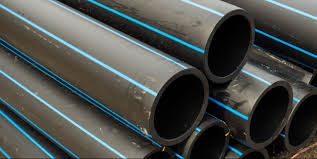Nov . 22, 2024 08:26 Back to list
hdpe to pvc transition coupling product
Transition Coupling from HDPE to PVC Optimizing Pipe Systems
In the world of plumbing and drainage systems, the choice of materials plays a crucial role in ensuring durability, efficiency, and overall performance. High-Density Polyethylene (HDPE) and Polyvinyl Chloride (PVC) are two of the most widely used materials in these applications. Each material has its unique properties, advantages, and specific applications, making them valuable in both residential and industrial plumbing solutions. However, transitioning from HDPE to PVC can sometimes pose challenges, which is where HDPE to PVC transition couplings come into play.
Understanding HDPE and PVC
HDPE is a lightweight yet robust plastic known for its high tensile strength and excellent resistance to environmental stress. Its flexibility and resistance to corrosion make it ideal for various applications, from water supply lines to agricultural piping systems. On the other hand, PVC is recognized for its rigidity and durability. It is commonly used in drainage, sewage, and other plumbing systems due to its water impermeability and low friction characteristics.
While both materials excel in their respective domains, there are instances where a seamless transition between the two is required. This could be due to changes in system requirements, compatibility issues, or the need for enhanced durability in specific contexts.
The Importance of Transition Couplings
Transition couplings are specialized fittings designed to connect two different types of pipes. In the case of HDPE to PVC transitions, these couplings serve several essential functions
1. Leak Prevention Transition couplings are engineered to create a watertight seal, preventing leaks at the connection point. This is critical in maintaining system integrity, especially in pressurized applications.
hdpe to pvc transition coupling product

3. Ease of Installation Transition couplings simplify the installation process by providing a straightforward method to connect dissimilar materials without the need for complex solutions.
4. Compatibility Assurance By using high-quality transition couplings, installers can ensure that the mechanical and chemical properties of the two pipe types are compatible, reducing the likelihood of degradation or failure over time.
Selecting the Right Coupling
When choosing HDPE to PVC transition couplings, several factors should be considered
- Size Compatibility Ensure the coupling matches the diameter of both the HDPE and PVC pipes to maintain proper flow characteristics. - Material Specifications Assess the material compatibility, particularly in terms of resistance to chemicals and environmental factors, to ensure a long-lasting connection.
- Pressure Ratings Consider the pressure requirements of the specific application. Properly rated couplings are crucial for high-pressure systems to avoid failures.
- Installation Method Transition couplings come in various designs, such as mechanical fittings and solvent welds, so the installer should choose the one that best suits the project requirements and their expertise.
Conclusion
In conclusion, transitioning from HDPE to PVC is a common necessity in plumbing and piping systems, and utilizing HDPE to PVC transition couplings is key to ensuring a seamless and efficient connection. By understanding the properties of both materials and the importance of high-quality couplings, installers can enhance the performance and longevity of their plumbing systems while reducing the risk of leaks and failures. Thus, making informed choices based on compatibility and technical specifications becomes essential for any successful plumbing project.
-
High-Quality PVC Borehole Pipes Durable & Versatile Pipe Solutions
NewsJul.08,2025
-
High-Quality PVC Perforated Pipes for Efficient Drainage Leading Manufacturers & Factories
NewsJul.08,2025
-
High-Quality PVC Borehole Pipes Durable Pipe Solutions by Leading Manufacturer
NewsJul.08,2025
-
High-Quality PVC Borehole Pipes Reliable PVC Pipe Manufacturer Solutions
NewsJul.07,2025
-
High-Quality UPVC Drain Pipes Durable HDPE & Drain Pipe Solutions
NewsJul.07,2025
-
High-Quality Conduit Pipes & HDPE Conduit Fittings Manufacturer Reliable Factory Supply
NewsJul.06,2025

